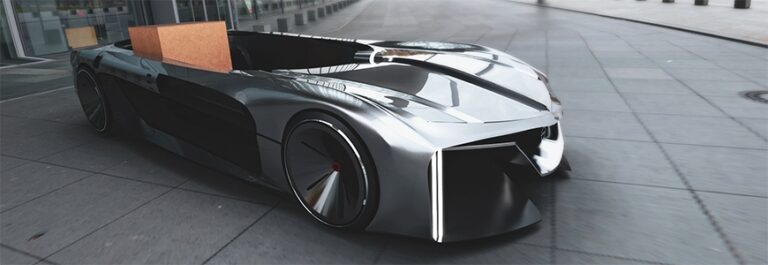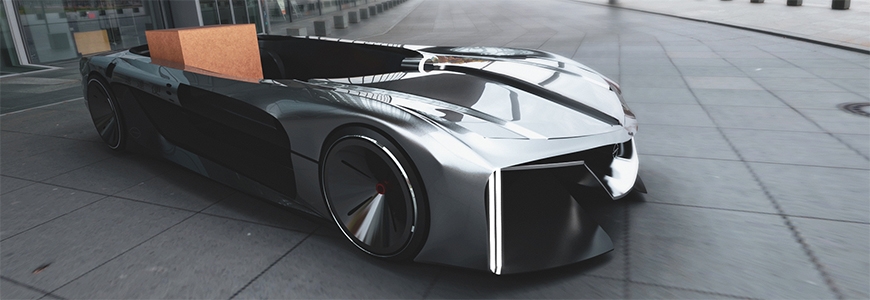
In May 2020, the Nissan Design Latin America Studio shared a post to their Instagram page, announcing a competition for designers and artists in to “Imagine a Cooler Future” in the year 2355. Any type of design creation was allowed, as long as it contained Nissan design language, branding and culture identity. Participants submitted proposals from around the world, all with different styles, characteristics, functions and areas of design.
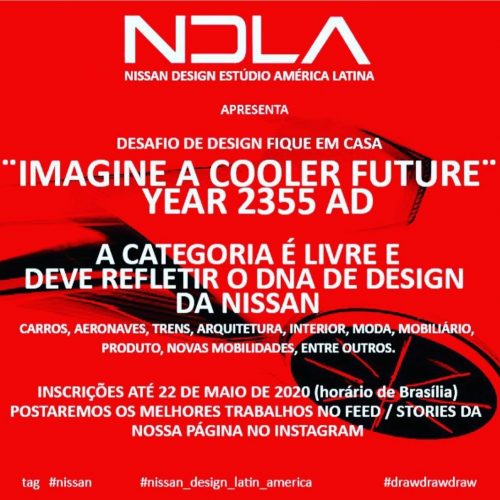
Gabriel Teixeira Vieira, a member of the Dassault Systémes LATAM technical sales team, joined this competition, and made it to the Top 3 in the Best Concept of Automotive Design category!
His idea is based on a service car, or express delivery vehicle, aimed at urban environments and roads. It has sleek, aerodynamic styling and dedicated space for luggage and other transportation requirements. The vehicle is 100% electric and autonomous, with a design focus on the synergies between these two technologies.
2D digital sketches and renderings symbolize the first part of this project, which was among the top 3 designs:
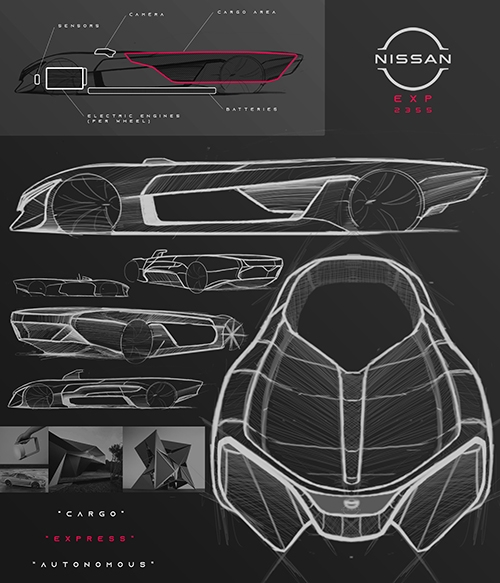
After this achievement, the LATAM tech sales team challenged Gabriel, go a step further and elevate this project into an experience. That is to say, transform the 2D project into a 3D one, using the tools of the 3DEXPERIENCE platform.
With that, a new challenge began, as Gabriel began to breathe life into this project, using the entire 3DEXPERIENCE Creative Design workflow. He began the process of transforming the design from 3D sketch, to a real-time experience of the product.
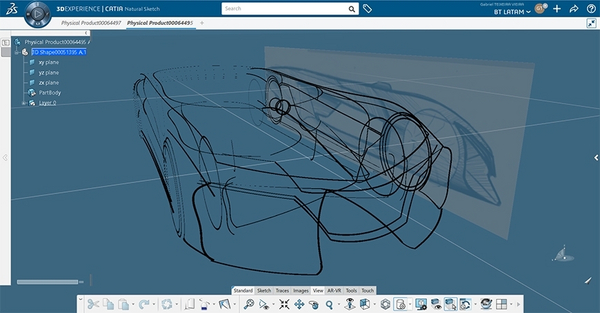
The 3D sketch phase was created in CATIA Natural Sketch. In order to visualize the idea more accurately, a 2D reference of the first drawings and ideas from the side view of the vehicle was used, resulting in originality of the design lines, while maintaining the visual identity of the Nissan brand from the beginning.
Tools, such as Trace curves, were important to define and construct the vehicle curves. With the design projection now taking place in 3D, all the work with surface modeling and detailing became more precise, simple and clean.
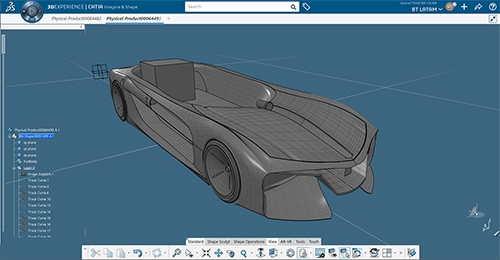
In the 3D modeling phase, the CATIA Imagine & Shape tool was used for modelling the surfaces and refinement, while using the 3D sketch base without needing any 2D references. This process accelerated the modeling process, and made it more accurate, in relation to the original characteristics of the project, proportions and packaging.
Using tools like IMA Extrude and Net Surface, it was possible to build the surfaces, and with tools like IMA Extrusion, Merge, Erase, Modification, Symmetry, Face Cutting and Mesh Tools, it was possible to refine, duplicate, modify and detail each surface of the vehicle.

CATIA Rendering Scene Design was used to create materials and textures, in which all the unique characteristics of each material were applied, from carbon fiber to emissive materials (headlights, tail lights). It was also possible to make fine adjustments, that made it possible to differentiate even materials of the same nature, for example: brushed metal, painted metal and chrome metal.
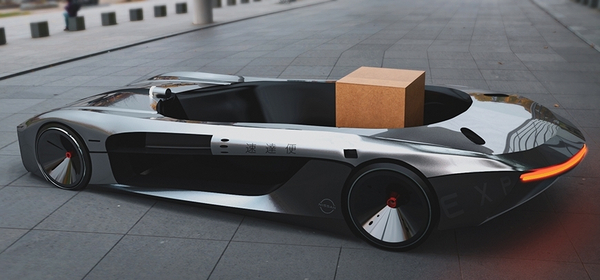
To create the real-time experience and renderings, the 3DEXCITE Creative Experience tool was used, where Gabriel was able to configure environments, lights and render settings.
Using the Stellar renderer, it was possible to adjust light bounces, iterations, image size, caustics and many other options.
In Creative Experience, cameras, camera animations, model animations and behaviors for real-time scenes, as well as the simplicity of configuring the entire scene to work as a high-quality VR experience, were created.
3DEXPERIENCE played a vital role in this project, where all the processes fit into the creative design workflow of the platform, saving time and using the cloud resources to enable digital continuity, in addition to completing the project entirely in one place, from start to finish, from 2D to 3D experience.
